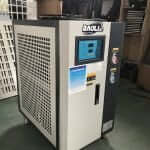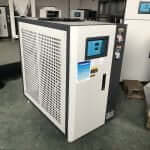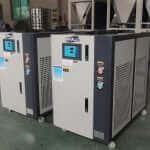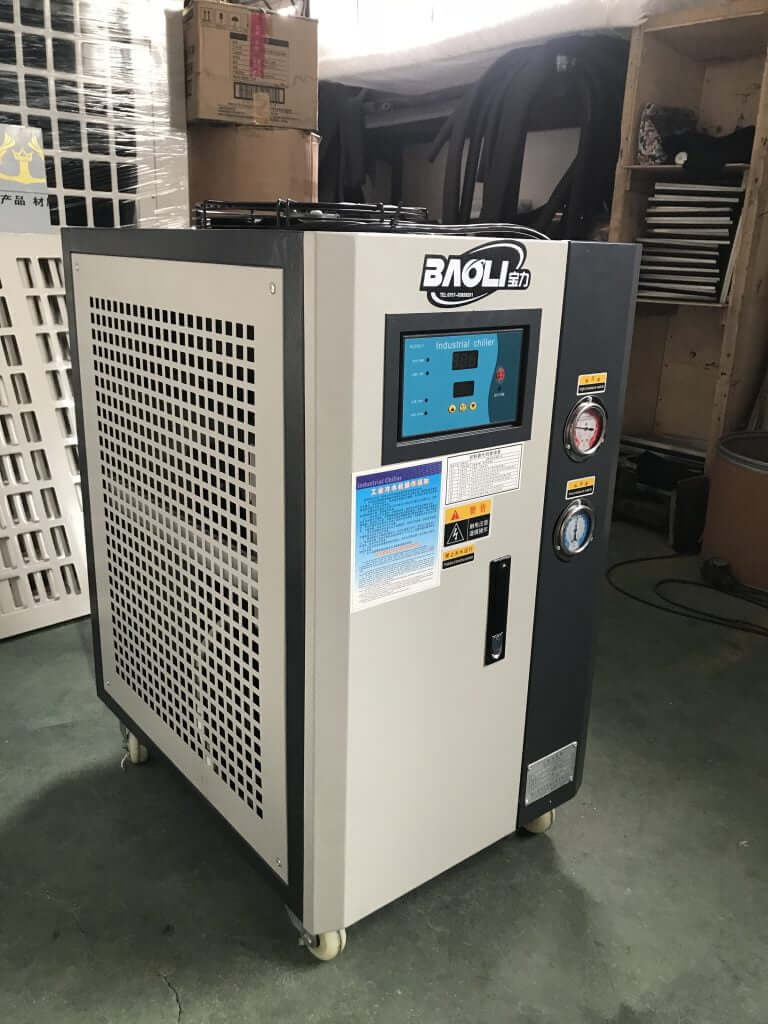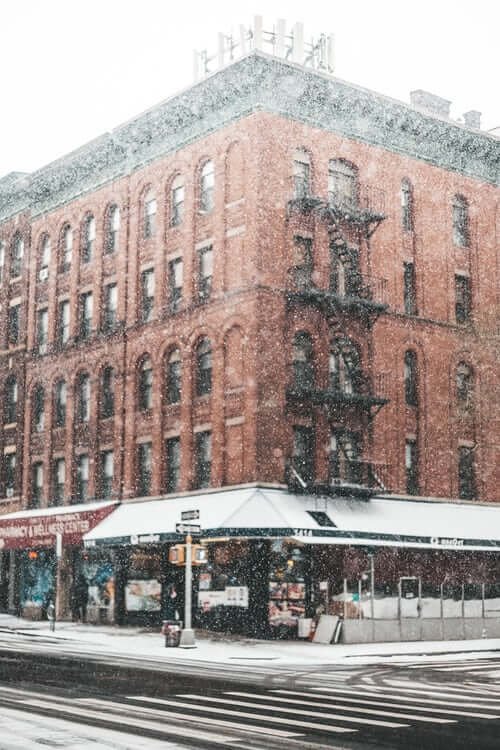Introduction:what is aquarium chiller?
Aquariums are not just a beautiful addition to our living spaces; they are miniature ecosystems that require careful maintenance to ensure the health and well-being of the aquatic life within. One of the crucial elements in maintaining a stable and suitable aquatic environment is the proper temperature control. This is where aquarium chillers come into play. An aquarium chiller is a device designed to lower the water temperature in the tank when it rises above the desired level, mimicking the natural conditions that many aquatic species need to thrive. Whether you have a saltwater reef tank with delicate corals and fish or a freshwater aquarium with temperature-sensitive species, choosing the right chiller is essential to prevent stress, disease, and even death among your aquatic inhabitants.
Factors to Consider When Choosing
The size of your aquarium is a primary factor in determining the appropriate chiller capacity. A larger tank will require a more powerful chiller to effectively cool the larger volume of water. As a general rule, you should calculate the volume of your tank in gallons or liters. For example, a small 20 – gallon tank will have different cooling requirements compared to a 100 – gallon tank. A chiller that is too small for the tank will struggle to maintain the desired temperature, leading to fluctuations that can be harmful to the fish and plants. On the other hand, a chiller that is too large will not only be a waste of money but may also cause excessive cooling, which can also have negative impacts. It’s important to find a chiller that is rated for the appropriate tank size to ensure efficient and accurate temperature control.
-
Water Temperature Requirements
Different aquatic species have specific temperature preferences. Some fish and corals thrive in cooler waters, while others prefer a slightly warmer environment. For instance, tropical fish usually do well in temperatures between 75°F and 82°F, while certain marine invertebrates like some species of corals may require a more precise temperature range around 78°F. It’s crucial to research the temperature needs of the specific organisms in your aquarium. If you have a diverse community of aquatic life, you may need to find a compromise temperature that suits most of them. The chiller you choose should be able to maintain the desired temperature range accurately. Some advanced chillers even come with programmable temperature settings, allowing you to customize the temperature according to the needs of your aquarium inhabitants.
Energy efficiency is an important consideration when choosing an aquarium chiller. A more energy-efficient chiller will not only save you money on your electricity bills in the long run but is also more environmentally friendly. Look for chillers that have high energy efficiency ratings. These often use advanced technologies and components to minimize power consumption while still providing effective cooling. Some features to look for include efficient compressors, good insulation, and intelligent temperature control systems that adjust the cooling output based on the actual temperature needs. Investing in an energy-efficient chiller may initially cost a bit more, but the savings over time can be significant, especially for larger aquariums that require continuous cooling.
The noise level of the chiller can have a significant impact on both the aquatic life and the surrounding environment. A noisy chiller can cause stress to the fish, which may affect their behavior and health. In a home setting, a loud chiller can also be a nuisance to the occupants. When choosing a chiller, look for models that are designed to operate quietly. Some manufacturers use sound-dampening materials and advanced motor technologies to reduce noise. It’s a good idea to read reviews and ask for recommendations from other aquarium owners about the noise levels of different chillers. A quiet chiller will provide a more peaceful and relaxing environment for your aquarium and your home.
Choosing a reputable brand with reliable products is essential when it comes to aquarium chillers. A well-known brand is more likely to have a track record of producing high-quality, durable, and reliable equipment. Look for brands that have been in the market for a while and have positive customer reviews. Reliable chillers are less likely to break down or malfunction, which can be disastrous for your aquarium. They also often come with better warranties and customer support. Brands that invest in research and development are more likely to offer advanced features and better performance. Do your homework and research different brands to ensure you are investing in a chiller that will provide long-term reliable service for your aquarium.
Guidelines for Selecting an Aquarium Chiller
Before making a purchase, it is crucial to do thorough research. Look online for product reviews, comparisons, and expert opinions. Aquarium forums and websites dedicated to aquatic hobbies are great sources of information. Read about the experiences of other aquarium owners who have used different chillers. This can give you insights into the performance, reliability, and any potential issues of various models. Pay attention to details such as how well the chiller maintained the temperature, its energy consumption, noise level, and ease of installation and maintenance. By gathering as much information as possible, you can make a more informed decision and increase the chances of choosing a chiller that meets your specific needs.
If you are new to aquarium keeping or unsure about which chiller is right for your setup, it can be beneficial to consult with aquarium experts or experienced hobbyists. They can provide valuable advice based on their knowledge and experience. Aquarium store employees who are knowledgeable about the products they sell can also offer guidance. They may be able to recommend specific models based on your tank size, the species in your aquarium, and your budget. Additionally, joining local aquarium clubs or online communities can give you access to a network of experienced individuals who can share their insights and experiences. Don’t be afraid to ask questions and seek advice from those who have more experience in maintaining a healthy aquatic environment.
While it’s important to choose a high-quality chiller, you also need to consider your budget. Aquarium chillers come in a wide range of prices, depending on their features, capacity, and brand. Set a budget that you are comfortable with, but also be aware that cheaper models may not always offer the best performance and reliability. It’s a good idea to balance cost with quality. Look for a chiller that offers good value for money within your budget. Consider the long-term costs as well, including energy consumption and potential maintenance expenses. Sometimes, investing a bit more upfront in a better-quality chiller can save you money in the long run by providing more efficient cooling and fewer breakdowns.
Denken Sie an die Einfachheit oder Komplexität der Installation und Wartung des Kühlers. Einige Kältemaschinen sind für eine einfache Installation konzipiert und werden mit klaren Anweisungen und allen erforderlichen Armaturen geliefert. Andere erfordern möglicherweise mehr technische Kenntnisse und Installationsfähigkeiten. Berücksichtigen Sie Ihre eigenen Fähigkeiten und überlegen Sie, ob Sie für die Installation einen Fachmann beauftragen müssen. Achten Sie im Hinblick auf die Wartung auf Kältemaschinen, die leicht zu reinigen sind und über zugängliche Komponenten für die Wartung verfügen. Regelmäßige Wartung ist unerlässlich, um den effizienten Betrieb des Kühlers zu gewährleisten und seine Lebensdauer zu verlängern. Prüfen Sie, ob der Hersteller Wartungsrichtlinien bereitstellt und ob Ersatzteile leicht verfügbar sind. Eine einfach zu installierende und zu wartende Kältemaschine spart Ihnen auf lange Sicht Zeit und Aufwand und stellt sicher, dass sie weiterhin gut funktioniert.
Specific Steps for Choosing the Right Aquarium Chiller
-
Determine Your Aquarium’s Requirements
– Measure the tank size: Accurately measure the length, width, and height of your aquarium to calculate its volume in gallons or liters. This will be the starting point for finding a chiller with the appropriate capacity.
– Research the species’ temperature needs: Identify the types of fish, plants, and other organisms in your aquarium and research their ideal temperature ranges. Find a common temperature range that can accommodate most of the inhabitants if you have a diverse community.
-
Set a Budget
– Decide how much you are willing to spend on the chiller. Consider not only the initial purchase price but also the long-term costs such as energy consumption and potential maintenance. Remember that a higher-quality chiller may cost more upfront but could save you money in the long run.
-
Research and Shortlist
– Online research: Look for aquarium chiller reviews on reliable websites, forums, and social media groups dedicated to aquariums. Read about the performance, reliability, and user experiences with different models.
– Ask for recommendations: Talk to aquarium store employees, experts, and other hobbyists. They can provide insights based on their own experiences and knowledge.
– Create a shortlist: Based on your research and recommendations, shortlist a few chiller models that seem to meet your requirements in terms of capacity, temperature control, energy efficiency, and noise level.
-
Check Energy Efficiency Ratings
– Look for energy star ratings or other indicators of energy efficiency. Compare the power consumption of the shortlisted chillers to find the most energy-efficient option that fits your budget.
-
Evaluate Noise Levels
– Read reviews and ask about the noise levels of the shortlisted chillers. If possible, try to find videos or demonstrations that show how quiet or noisy a particular model is. Opt for a chiller that operates quietly to avoid stressing your aquatic life and disturbing your living environment.
-
Consider Brand and Reliability
– Research the brands of the shortlisted chillers. Look for brands with a good reputation for producing reliable and durable aquarium equipment. Check customer reviews for feedback on the brand’s after-sales service and warranty policies.
-
Examine Installation and Maintenance Requirements
– Read the product manuals or online descriptions to understand the installation process. Consider whether you have the necessary skills and tools for installation or if you may need to hire a professional.
– Look for chillers that are easy to maintain, with accessible filters, coils, and other components that may need cleaning or servicing. Check if the manufacturer provides clear maintenance guidelines and if replacement parts are readily available.
-
Make the Final Decision
– Vergleichen Sie alle Faktoren für jede in die engere Wahl gezogene Kältemaschine. Überlegen Sie, welches Gerät im Rahmen Ihres Budgets das beste Gleichgewicht zwischen Leistung, Zuverlässigkeit, Energieeffizienz, Geräuschpegel sowie einfacher Installation und Wartung bietet. Treffen Sie die endgültige Entscheidung auf Grundlage Ihrer umfassenden Bewertung und kaufen Sie den gewählten Aquarienkühler.
Überlegungen zur Installation des Aquariumkühlers
- Platzbedarf: Stellen Sie sicher, dass rund um das Aquarium genügend Platz für die Installation des Kühlers vorhanden ist. Es sollte an einem Ort aufgestellt werden, an dem es ausreichend belüftet ist und nicht zu eng ist. Ein Kühler muss Wärme ableiten und sollte daher nicht in einem geschlossenen Bereich mit eingeschränkter Luftzirkulation aufgestellt werden.
- Proximity to the Tank: The chiller should be located as close as possible to the aquarium to minimize the length of the tubing required for water circulation. Longer tubing can lead to increased pressure drops and potentially affect the chiller’s efficiency. However, make sure there is enough clearance around the chiller for maintenance and access.
- Avoid Direct Sunlight and Heat Sources: Do not install the chiller in a place where it will be exposed to direct sunlight or near heat sources such as radiators, heaters, or appliances that generate a lot of heat. This can cause the chiller to work harder than necessary to cool the water and may even lead to overheating of the chiller itself.
- Richtige Schlauchgröße: Verwenden Sie die vom Kühlerhersteller empfohlene Schlauchgröße. Ein falscher Rohrdurchmesser kann sich auf die Wasserdurchflussrate und den Wasserdruck auswirken, was wiederum Auswirkungen auf die Leistung des Kühlers haben kann. Stellen Sie sicher, dass der Schlauch von guter Qualität ist und keine Mängel oder Knicke aufweist.
- Sichere Verbindungen: Alle Schlauchverbindungen sollten sicher hergestellt werden, um Lecks zu verhindern. Verwenden Sie geeignete Armaturen und Klemmen, um eine dichte Abdichtung zu gewährleisten. Undichtigkeiten können nicht nur Wasserverschwendung verursachen, sondern auch zu Unordnung führen und möglicherweise Ihren Bodenbelag oder die umliegenden Möbel beschädigen. Überprüfen Sie nach der Installation, ob Lecks vorhanden sind, indem Sie den Kühler kurz laufen lassen und die Anschlüsse beobachten.
- Water Flow Direction: Follow the correct water flow direction as indicated in the chiller’s installation manual. Incorrect flow direction can lead to inefficient cooling or even damage the chiller’s internal components. Some chillers may have specific requirements for the inlet and outlet of water, so make sure to connect them correctly.
- Voltage and Amperage Requirements: Check the electrical requirements of the chiller and make sure that the power supply in your area can meet those requirements. Using the wrong voltage or insufficient amperage can cause the chiller to malfunction or not operate properly. It may also damage the electrical components of the chiller and pose a safety hazard.
- Grounding: Ensure that the chiller is properly grounded to prevent electrical shocks. Most electrical appliances come with a grounding wire or a grounding plug. Make sure to connect it to a properly grounded electrical outlet. If in doubt, consult an electrician to check the grounding of your electrical system.
- Power Cord Length and Placement: The power cord should be long enough to reach the electrical outlet without being stretched or strained. Avoid running the power cord across high-traffic areas or in a way that it can be easily damaged. If possible, use a cord cover or conduit to protect the power cord and make it look more organized.
-
Initial Startup and Testing
- Read the Manual: Before starting the chiller for the first time, carefully read the manufacturer’s instructions regarding the initial startup procedure. This may include steps such as filling the chiller with water (if required), priming the pump, and setting the initial temperature settings.
- Monitor Temperature: After starting the chiller, closely monitor the water temperature in the aquarium. Check if the chiller is able to reach and maintain the desired temperature within a reasonable time. If the temperature does not seem to be changing as expected or if there are any unusual fluctuations, turn off the chiller and check for any installation errors or problems.
- Check for Noise and Vibrations: Listen for any abnormal noise or vibrations coming from the chiller during operation. Excessive noise or vibrations may indicate a problem with the installation, such as improper leveling or a loose component. If you notice any issues, turn off the chiller and investigate further to ensure proper operation and longevity of the device.
Abschluss
Choosing the right aquarium chiller is a crucial decision that can have a significant impact on the health and well-being of your aquatic pets. By considering factors such as tank size and capacity, water temperature requirements, energy efficiency, noise level, brand and reliability, and following the specific steps for selection and installation, you can make an informed choice. A well-chosen and properly installed chiller will help maintain a stable and suitable aquatic environment, allowing your fish, plants, and other organisms to thrive. Remember that investing time and effort in choosing and installing the right chiller is an investment in the long-term success of your aquarium and the enjoyment you get from observing and caring for your aquatic friends. So, take your time, do your homework, and make the best choices for your unique aquarium setup.
To learn more about how chillers work and If you’re interested in our chiller, request a quote,
pls sent your E-mail to info@topwaterchiller.com, or call +(86) 139 2883 9015 .









